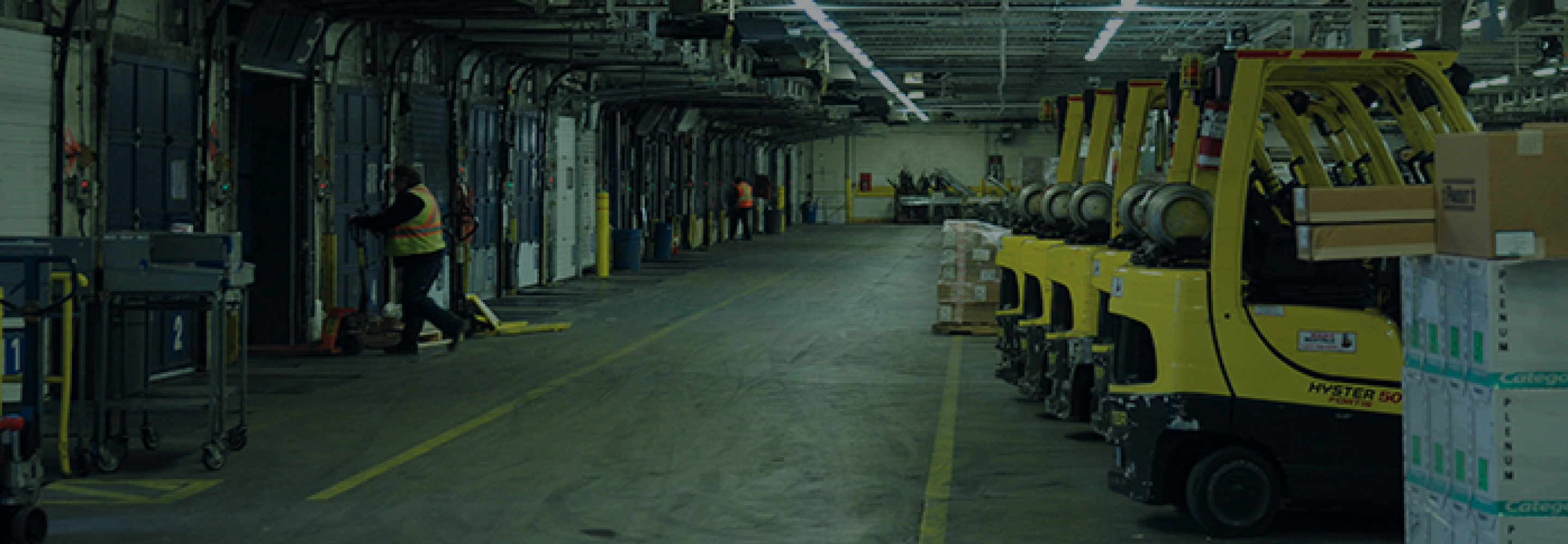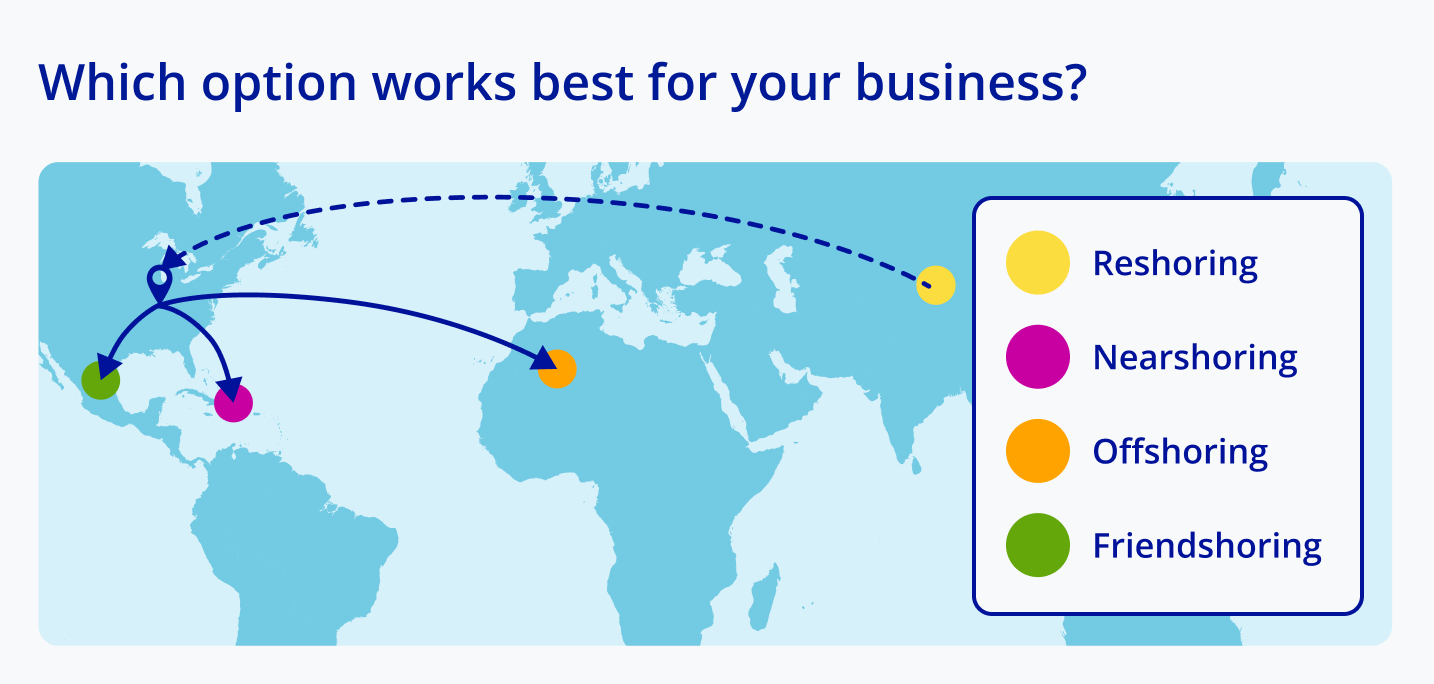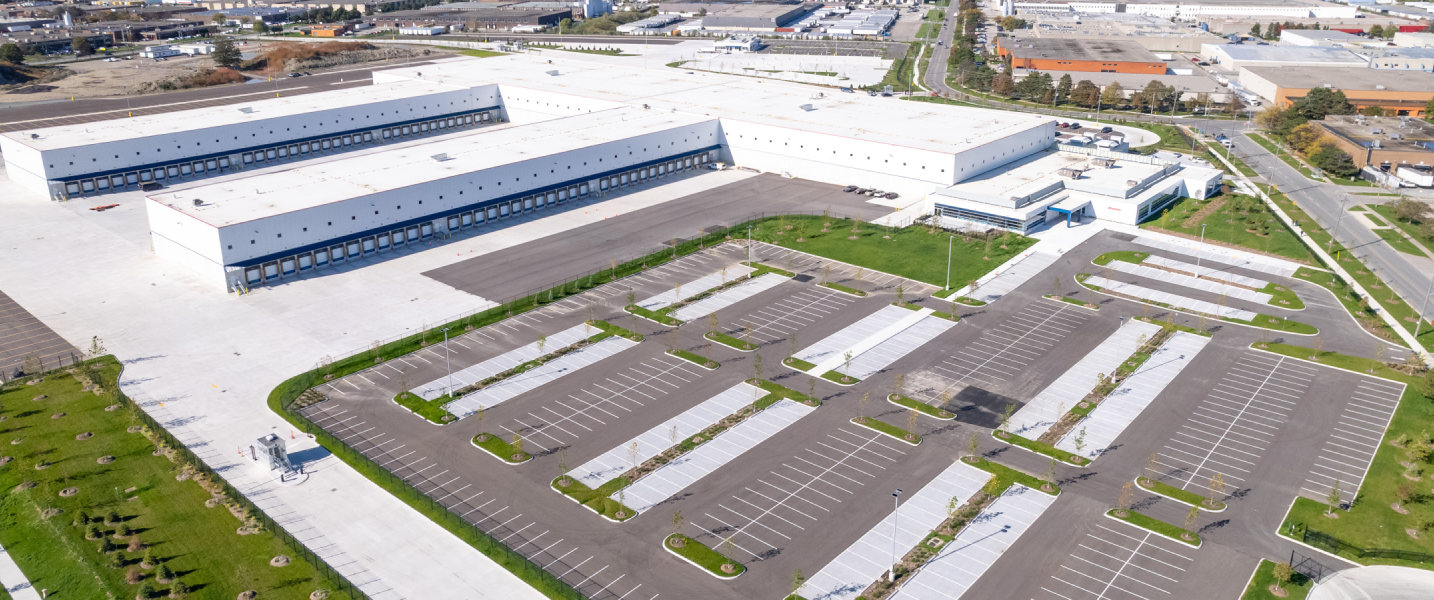Strategic sourcing—an essential shift in procurement logistics
A strategic approach to procurement and sourcing is critical to business success. Across industries, businesses have developed their strategic approaches to overcome unexpected global supply chain challenges. They’ve adapted by changing their sourcing strategy or the way they source raw materials and components.
Strategic sourcing is a procurement strategy that helps with general cost efficiency and decreases supply chain risks. It can also increase operational efficiency, sustainability and more during the procurement and manufacturing stages of the supply chain.
By re-evaluating their procurement strategies, businesses can thrive and gain a competitive edge. And with the right sourcing strategies, they can stay competitive even in the face of evolving trends and changing behaviours like urgent and next-day deliveries, e-commerce demands and consumer expectations around sustainability. More specifically, businesses are reevaluating their sourcing strategies. From vendor diversification to leveraging software for insightful marketing data and forecasting, strategic sourcing gives businesses an advantage because it acts as a solid foundation for a resilient supply chain. As market demands continue to change, supply chain managers should take a step back and focus on procurement and logistics management, a critical part of the supply chain.The world of procurement strategies and supply chain management moves fast. This article will explore procurement logistics, procurement software and various sourcing strategies.
What is procurement logistics?
Procurement logistics is an essential part of supply chain management. However, it’s important to differentiate between procurement and supply chain management. Procurement is the process of acquiring the materials a business needs to manufacture and sell its products or services. Meanwhile, supply chain management is the process of manufacturing materials into sellable goods and distributing them.
Effective procurement logistics management entails proper planning and organization to ensure that:
- The procurement process is fast and efficient
- Businesses know how much money they’ll spend on procurement
- Businesses save time and money and don’t waste resources
This also improves the company’s image and lets customers know that they’re reliable. Procurement logistics is an effective way to fine-tune your supply chain and find operational efficiencies.
The benefits of procurement software and automation
Businesses that need to develop new procurement strategies may feel like they have a daunting task ahead. Thankfully, procurement software can make the process easier. It can also make procurement and logistics management seamless.
It’s common to see this type of software referred to as eProcurement or purchasing software. No matter the name, here’s how it can help businesses:
- Uses predictive analysis for demand forecasts
- Improves supply chain visibility
- Safeguards companies against supply chain disruptions
- Strengthens relationships with suppliers
- Develops accurate demand forecasting
- Saves money with better inventory management
- Reduces labour costs with administrative task automation
Streamlined logistics and saved costs are two of the most important benefits of procurement software. Businesses can achieve both when they leverage software to get robust demand forecasting. Demand forecasting requires historical data analysis, which helps businesses predict future demand for the products they sell.
Businesses with this sort of informed understanding of future demand save money because they can manage their inventory accurately. Procurement software also looks at geography so businesses know which products are likeliest to sell at higher volumes. As a result, they rarely end up manufacturing too much, which would lead to wasted or too little storage space that could be reserved for other products. They can also make better decisions about logistics and distribution and discover new opportunities.
Software and automation should also make the day to day of running a business easier. Something as simple as an invoicing and payment system, for example, can support business development and free up time for more important tasks.
Businesses can also employ software and automation to safeguard your supply chain. Fraud is costly to businesses and can happen at any stage of the supply chain. Loss, theft and various scams also result in hefty costs to businesses. Inventory tracking systems and software help businesses keep a closer eye on inventory so they’re aware of discrepancies that may point to fraud or theft. More specifically, they can reduce the risks of inventory shrinkage and logistics fraud.
With so much to monitor throughout the supply chain, businesses need to have a solid idea of what they need from their software solutions. Here are some key features businesses should look for when the time comes to evaluate procurement software options:
- Automates administrative tasks like order approval and invoice payment
- Stores and examines data for forecasting and market analysis
- Integrates with a business’ existing software for more seamless operations
- Conducts regular data and spend analyses to inform business decisions
- Handles all procure-to-pay processes to get products to market faster
Some software includes supplier aggregators so businesses can get a holistic view of the suppliers available to them. It also helps businesses choose affordable and reliable suppliers that are aligned with their values and goals.
Weighing your options: Reshoring, nearshoring, offshoring and friendshoring
Once a business reevaluates procurement logistics, they’ll likely need to dive deeper into strategic sourcing. Strategic sourcing improves supplier relationships and increases pricing visibility. It also helps companies remain profitable despite changing economic and other external factors.
To be efficient, budget-effective and ultimately profitable, businesses need to source materials strategically. Supply chain management professionals need to understand the benefits of each type of sourcing and what will make their supply chain most effective and resilient. Strategic sourcing involves weighing your options between reshoring, nearshoring, offshoring and friendshoring. When evaluating your approach, you should consider how each option impacts your company’s profitability. For a strategic approach, you’ll want to factor in internal and external elements including:
- Shifts in the market
- Spend analysis
- Supplier options
- Changes to consumer behaviour
Businesses can also use dual-sourcing strategies. Dual sourcing involves using two suppliers and it can help with supply chain efficiency, resilience and ensuring they can deliver during high-demand periods. This section breaks down the benefits and challenges of nearshoring, reshoring, offshoring and friendshoring. These are all viable sourcing options. However, the most suitable one depends on a company’s industry, commitment to sustainability and business goals.
Reshoring
What is reshoring? This procurement and logistics management approach involves bringing production and manufacturing back to a company’s home country. This sourcing style has become increasingly popular, especially among U.S. companies. Reshoring manufacturing provides better access to skilled labour at a reasonable cost and an improved operational structure. This creates high-quality products and even helps keep overproduction under control.
According to Kearney, starting in 2023, 96% of CEOs began to examine their operations and consider reshoring. Many U.S. companies needed to at least think of reshoring after the 2008 recession. This strategy enabled them to help with increasing unemployment within the U.S. and cut some procurement and manufacturing costs.
General Motors (GM) decided to reshore electric vehicle and battery production in 2021. GM decided to reshore manufacturing in the wake of the global semiconductor shortage that decreased their planned production by over 800,000 vehicles. This allowed them to create around 4,000 jobs in their home state of Michigan.
A report from Thomas Insights discovered that many U.S. businesses in the oil, gas and automobile spaces are looking into reshoring. Meanwhile, North American Manufacturing found that around 83% of North American manufacturers are considering or have considered reshoring.
Here’s what businesses should examine when considering reshoring manufacturing:
Benefits Considerations
Helps create domestic jobs May require a net-new operational plan
Increases resilience and control over the supply chain Costs of new facilities and employees
Regulatory compliance associated with reshoring reduces the risks of non-compliance and potential legal issues Temporarily disrupts the previous supply chain
Makes sourcing more sustainable to help companies meet environmental targets Need to develop new operational strategy
Nearshoring
When a company nearshores, they move their manufacturing and sourcing from a farther country to a nearby one. U.S. and Canadian construction companies often nearshore to Mexico. This is fueled by the United States-Mexico-Canada Agreement (USMCA), which allows these nearshoring companies to operate duty-free. In Laredo, Texas, specifically, bridge and railway infrastructure will also make it easier to transfer materials and goods between the United States and Mexico.
Industrial company Honeywell has been nearshoring in Mexico since 1936. Today, many of their aerospace components are manufactured in Mexico, where they have more than 120,000 employees. In fact, the Mexican state of Baja California is home to a cluster of aerospace manufacturing facilities. Honeywell is just one of many U.S. companies that nearshores there.
Here’s what businesses should examine when considering nearshoring:
Benefits Considerations
Improves product quality since oversight is still easy from a nearby location Customs and duties charges can increase as a result of geopolitical events
Increases speed to market Technology in the nearshoring country may differ from what’s available in the company’s home country
Can create cross-border cost-efficiencies Cultural differences that impact business processes
Offshoring
Offshoring—also known as offshore outsourcing—moves a business’ activities to a foreign country or multiple foreign countries. Offshore outsourcing is another common term. It refers to the process of a business outsourcing or hiring another company to handle their offshore operations.
Many large companies offshore because of the financial benefits and the ability to tap into international skilled labour. One large consumer brand that practices offshoring runs the second-largest research and development (R&D) facility in the world. With their stakeholders in mind, the brand built an R&D centre in one of India’s largest cities to attract a wealth of skilled workers. Today, they employ thousands of workers in the area. Offshoring has a number of advantages as well as possible downfalls. Here’s what businesses should examine when considering offshoring:
Benefits Considerations
Lowers the costs of labour and resources Susceptibility to unexpected geopolitical changes
Grows opportunities to broaden international customer base Exchange rates can fluctuate and impact business costs
Offers companies tax incentives (depending on the country) Regulatory laws may interfere with established business practices
Friendshoring
Friendshoring, sometimes called ally-shoring, lives up to its name. This sourcing strategy involves companies doing business in countries that are aligned with theirs politically and economically. It’s most suitable for businesses that don’t face a lot of supply chain regulation or rely primarily on foreign suppliers.
However, as friendshoring becomes more popular, worries are also increasing around deglobalization. On one hand, friendshoring can help some countries with economic recovery. Companies including 3M and Prologis have expressed support for friendshoring between Mexico and the U.S.
On the other hand, there are concerns that only working with certain countries will isolate others and cause economic fragmentation, power imbalances and increased border controls. Like all of the other options, friendshoring has its advantages and disadvantages. Here’s what businesses should examine when considering friendshoring:
Benefits Considerations
Reduces risk of geopolitical tensions that can disrupt the supply chain Contribution to deglobalization, which can negatively impact the global economy
Lowers inventory levels and therefore inventory costs Possible limited access to any raw materials that need to be mined
Keeps shipping costs down overall Regulations, duties and tariffs are still susceptible to change
Working with a cross-border logistics partner
Before you’re ready to ship off your products, here’s a recap of what to consider as you evaluate your company’s procurement approach:
- The costs of labour, manufacturing, sourcing, storage, logistics and shipping
- Geopolitical stability in the countries where they offshore, nearshore or friendshore
- The pros and cons of each sourcing strategy
- Resilience at all stages of the supply chain
- Changing consumer demands and expectations, including sustainability
The right sourcing strategy can drive business growth and increase resilience even as markets and supply chains change.
Whichever strategy you choose, cross-border shipping can seem overwhelming without the right partner to guide you. A solid shipping partner will be able to walk you through the procurement logistics process and support you with customs, duties, regulations and more. Their goal should be to help your business save money and get your goods to their destination.
Additionally, the way you ship needs to work for your business and your customers. That’s why partnering with a full coverage shipping provider is crucial to your final mile. For example, Purolator offers flexible shipping options that stretch across Canada. In fact, Purolator reaches 100% of Canadian postal codes, so your business can ship from coast to coast or to rural areas.
And lastly, as your business grows across Canada and across borders, it’s important to stay efficient in an environmentally sustainable way.

Purolator’s National Hub is a sustainable facility that triples shipping capacity for the businesses we serve. Our commitment to sustainability helps us support your business as you create more sustainable logistics and supply chain management.



